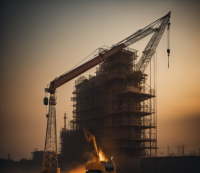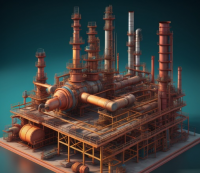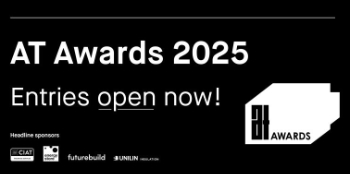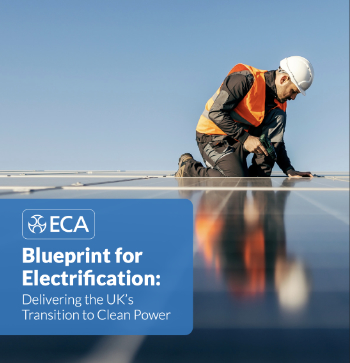Design performance evaluation
Contents |
UNLOCKING Excellence: A Comprehensive Guide to Design Performance Evaluation
“Quality design is the cornerstone of construction excellence, shaping not only the structure we build, but also the legacies we leave behind.”
In construction industry, design performance can be evaluated in three phases: design development, during construction, and after project completion when the end-user’s satisfaction is assessed.
In each phase, certain indicators can be evaluated to understand the performance of the design or designer as an improvement action initiator for current and other projects. These indicators are divided into two as leading and lagging.
Leading indicators: “These are metrics focused on activities that ensure the project remains on track.”
Lagging indicators: “These metrics measure past performance to assess design quality and inform future projects.”
Design Phase:
Risk Register
Using risk management during the design phase of a construction project is essential for several reasons:
1. Early Identification of Risks: During the design phase, project stakeholders can identify potential risks and uncertainties related to the project's design, scope, and specifications. Identifying these risks early allows for proactive planning and mitigation strategies.
2. Cost Control: Addressing risks during the design phase is often less costly than dealing with them during construction or after project completion. By identifying risks early, you can make informed decisions that can help prevent cost overruns.
3. Schedule Management: Risks identified during the design phase can impact the project schedule. Effective risk management allows for the development of contingency plans to minimize schedule delays and keep the project on track.
4. Quality Assurance: Addressing risks in the design phase can lead to better-quality outcomes. By identifying potential design flaws or issues, you can make necessary modifications to ensure that the final construction meets the required standards and specifications.
5. Safety Considerations: Safety is a critical aspect of construction projects. Identifying and mitigating risks in the design phase can help prevent accidents and ensure the safety of workers and future occupants.
6. Stakeholder Expectations: Clients, investors, and regulatory authorities often require thorough risk assessment and management plans as part of project documentation. Demonstrating a commitment to risk management can build trust and confidence among stakeholders.
7. Legal and Regulatory Compliance: Many construction projects are subject to various regulations and codes. Effective risk management during the design phase helps ensure that the project complies with all applicable legal and regulatory requirements.
8. Decision-Making: Having a clear understanding of potential risks and their impacts during the design phase enables project teams to make informed decisions about project scope, design alternatives, and resource allocation.
9. Project Success: Ultimately, effective risk management contributes to the overall success of the construction project. It helps minimize surprises, reduces uncertainty, and increases the likelihood of delivering the project on time, within budget, and to the desired quality standards.
To implement risk management during the design phase, project teams typically engage in activities such as risk assessment, risk quantification, risk prioritization, and the development of risk response plans. This systematic approach allows for the proactive management of risks, leading to a more successful and predictable construction project outcome.
Subcontracting
Performance of Subcontractors for design activities has definitely positive or negative support to design quality by compliance with contractual requirements, especially with schedule and legacy reporting of their executed activities.
The performance of a design subcontractor can significantly impact the overall design quality of a construction project. Here's how:
- Expertise and Skills: A subcontractor with a high level of expertise and skills in a specific area of design can enhance the overall quality. Their specialized knowledge can contribute to innovative and efficient design solutions.
- Quality of Work: The subcontractor's ability to deliver high-quality work directly affects the components or aspects of the project they are responsible for. If their work is subpar, it can lead to defects, structural issues, or design flaws, compromising the overall quality of the project.
- Integration with Main Design: Subcontractors often work on specific elements of a project. If their designs do not integrate seamlessly with the main design, it can lead to inconsistencies and aesthetic or functional problems in the final project.
- Timeliness: Delays in design work can cause bottlenecks in the construction schedule. If a design subcontractor does not deliver their work on time, it can disrupt the entire project timeline, leading to rushed decisions and potentially lower quality due to lack of thoroughness.
- Coordination and Communication: Effective communication and coordination between subcontractors and the main design team are vital. Miscommunication or lack of coordination can lead to discrepancies in the design, resulting in rework and lower quality in the final product.
- Compliance and Regulations: Design subcontractors must adhere to design codes, regulations, and industry standards. If their designs do not comply, it can lead to legal issues, fines, and a final product that might not be safe or legally sound.
- Cost Impacts: If a subcontractor's designs require significant alterations or corrections, it can lead to additional costs. These budget overruns can limit the project’s ability to use high-quality materials or implement other aspects of the design that enhance quality.
- Client Satisfaction: Ultimately, the quality of the final design directly influences client satisfaction. If the client perceives the design as subpar, it can harm the reputation of all parties involved and lead to dissatisfaction, potential legal disputes, or reluctance to work with the involved parties in the future.
- Long-term Durability: A poorly designed element, even if constructed correctly, might not stand the test of time. Subpar materials or design choices can lead to maintenance issues, degradation, or even failure of the structure or system over the long term.
In summary, the performance of a design subcontractor has a cascading effect on various aspects of a construction project. Their expertise, timeliness, coordination, adherence to regulations, and overall quality of work directly influence the final design. Collaborative efforts and stringent quality control measures are essential to ensuring that subcontractors contribute positively to the overall design quality of the project.
Site visits
- Site Conditions Assessment: One of the primary purposes of site visits is to assess the existing site conditions. This includes understanding the topography, soil quality, drainage patterns, geological features, and any environmental or ecological considerations. These site-specific factors can significantly impact the design and engineering of the project.
- Design Verification: Site visits allow designers to verify that the proposed design aligns with the physical characteristics of the site. It helps ensure that the design is practical and can be executed as planned. Any discrepancies between the design and site conditions can be identified and addressed early in the project, reducing the risk of costly changes during construction.
- Access and Logistics: Site visits help in evaluating access to the construction site, transportation routes, and logistical considerations. Understanding how materials and equipment will be delivered to the site, as well as how construction crews will access the location, is crucial for efficient project planning and execution.
- Environmental and Regulatory Compliance: Site visits are necessary to assess environmental factors and regulatory requirements specific to the project site. This includes identifying potential environmental impacts, compliance with zoning regulations, permits, and other legal obligations that may vary depending on the site's location.
- Risk Identification: By visiting the site, project teams can identify potential risks and hazards related to construction activities. This includes recognizing safety concerns, utility conflicts, or unforeseen challenges that might affect the project's design or construction processes.
- Stakeholder Engagement: Site visits provide an opportunity for clients, investors, and other project stakeholders to visualize the proposed design within the actual site context. This can help in aligning expectations, gathering feedback, and ensuring that the design meets their requirements and objectives.
- Value Engineering: Site visits can lead to value engineering opportunities. Value engineering involves finding cost-effective design solutions that maintain or enhance project quality while reducing costs. Being on-site allows experts to explore alternative approaches and materials that might be more efficient or economical.
- Collaboration and Communication: Site visits facilitate effective communication and collaboration among the project team members, including architects, engineers, contractors, and subcontractors. Being on-site allows for direct discussions and problem-solving, fostering a collaborative project environment.
- Visualization: Seeing the site first-hand helps project team members visualize the project's spatial relationships, view corridors, and other design aspects that might not be fully understood through drawings and plans alone.
- Preconstruction Planning: Site visits are crucial for the development of preconstruction plans, including site layout, staging areas, safety protocols, and construction phasing. These plans are vital for ensuring a smooth and organized construction process.
In summary, site visits during the design phase are essential to gather critical site-specific information, verify design feasibility, address regulatory and environmental considerations, identify potential risks, and promote effective collaboration among project stakeholders. They contribute to a more informed and successful construction project outcome.
Design change
A scope change is defined as any change to a feature required for the plant, facility or service to expand or reduce its functionality as described in the approved Project Proposal, including but not limited to, the facility purpose, physical characteristics, throughput, attributes, location (as a whole), and schedule. The detail engineering development may result in changes in stand-alone, asset-type, material or equipment quantities which represent a scope change.
Design comments ratio:
Measuring design comments can be a valuable way to assess design quality and gather feedback for improvement. Here are some steps to consider when measuring design comments as design quality metrics:
- Collect Design Comments: Gather design comments from various stakeholders, including team members, clients, users, and experts. These comments can come from design review meetings, feedback sessions, online collaboration tools, or any other communication channels used during the design process.
- Categorize Comments: Categorize design comments into different groups based on their nature. Common categories might include usability, functionality, aesthetics, feasibility, compliance with standards, and potential risks. Categorization helps in understanding the specific aspects of the design that are being commented upon.
- Quantify Comments: Assign a numerical value or qualitative label to each comment based on its severity or significance. For example, comments can be categorized as critical, major, minor, or trivial based on their impact on the design. Alternatively, you can use a numerical scale (e.g., 1 to 5) to rate the importance of each comment.
- Frequency of Comments: Analyze the frequency of specific design comments. Comments that are mentioned frequently might indicate common issues that need immediate attention. Conversely, unique comments could highlight specific concerns or ideas from different stakeholders.
- Root Cause Analysis: Understand the underlying reasons for recurring design comments. Con-duct root cause analysis to identify the fundamental issues causing certain types of comments. Addressing root causes can lead to more comprehensive improvements in the design process.
- Response Time: Measure the time it takes to address and resolve design comments. Timely responses demonstrate the team's agility and commitment to improving the design based on feedback.
- Resolution Rate: Track the rate at which design comments are resolved or implemented into the design. A high-resolution rate indicates an effective feedback loop and proactive design improvements.
- Impact on Design Changes: Evaluate the impact of design comments on the subsequent design changes. Assess whether addressing specific comments led to improvements in the design quality or user satisfaction. This can provide insights into the effectiveness of feedback implementation.
- Comparative Analysis: Compare design comments across different phases of the project or be-tween different design iterations. Understanding how feedback evolves over time can help in assessing the progress of the design process.
- Iterative Feedback: Implement an iterative feedback process where design comments are continually collected, analyzed, and integrated into the design. This iterative approach ensures ongoing improvements and refinement of the design quality.
By implementing these steps, you can effectively measure design comments as design quality indicators, enabling continuous improvement and ensuring that the final design meets or exceeds stakeholder expectations.
Stakeholder Satisfaction: Gather feedback from stakeholders about the responsiveness and effectiveness of the design team in addressing their comments. High stakeholder satisfaction indicates a positive approach to feedback management.
Construction Phase:
Constructability: refers to the ease and efficiency with which a design can be constructed. Measuring constructability as a design quality performance involves evaluating the design's practicality, feasibility, and efficiency in the context of construction and project execution. Here are some ways to measure constructability as a design quality performance metric:
- Early Input from Construction Experts: Involve construction professionals and contractors in the early design phases. Their input can provide valuable insights into potential construction challenges, material availability, manpower requirements, and cost implications. Measure the extent to which their suggestions are integrated into the design.
- Clash Detection: Use 3D modelling software to detect clashes and interferences between different construction elements in the design. Fewer clashes mean a more constructible design, as it reduces the need for costly on-site modifications during construction.
- Simplicity and Standardization: Evaluate the design for simplicity and standardization of components. Complex designs with intricate details can be harder and more expensive to construct. Standardized components are often easier for contractors to work with and can lead to cost savings.
- Feasibility Analysis: Conduct feasibility studies to assess the practicality of the design. Consider factors such as site conditions, local regulations, environmental impact, and availability of resources. A de-sign that aligns with these factors is more likely to be constructible.
- Construction Sequence and Phasing: Evaluate the design's flexibility in terms of construction sequencing and phasing. A design that allows for efficient construction sequencing, especially in complex or occupied sites, is considered highly constructible.
- Material Availability and Lead Times: Assess the availability of materials specified in the design. Long lead times or rare materials can lead to delays in construction. Measure the design's reliance on readily available materials.
- Accessibility and Safety: Evaluate the design for ease of access during construction. Complicated layouts or designs with limited access points can slow down construction progress. Additionally, con-sider safety aspects in the design. A safe construction environment is essential for timely completion.
- Cost-Efficiency: Analyze the design's cost implications during construction. This includes evaluating the cost of materials, labour, equipment, and construction methods. A design that minimizes waste and optimizes resource utilization is considered highly constructible.
- Constructability Reviews: Conduct regular constructability reviews with construction professionals to identify potential challenges and improvements. Measure the number of issues identified and resolved during these reviews.
- Change Orders and RFI (Request for Information) Rates: Track the number of change orders and RFIs issued during construction. A high number may indicate design ambiguities or lack of constructability considerations. Lowering these numbers over time signifies improvements in design quality.
- Post-Construction Evaluation: After the project is completed, assess how closely the actual construction process aligns with the planned constructability measures. Identify areas where deviations occurred and analyze the reasons behind them.
- Compliance: is to verify that the design complies with local building codes, regulations, and industry standards.
- Environmental Impact: is to assess the environmental impact of the design, including its carbon footprint and resource consumption.
By systematically evaluating these factors and implementing feedback from construction experts, you can measure constructability as a design quality performance metric. Continuous improvement in constructability leads to smoother construction processes, reduced costs, and timely project delivery.
Operations Phase
Below listed indicators can be evaluated during operations phase for the design performance as a feedback to other projects, and they can be converted to lessons learned items.
- Functionality: is to assess whether the design meets its intended purpose and functionality requirements. This could involve evaluating how well spaces are utilized, whether equipment fits properly, etc.
- Safety: is to evaluate the design in terms of safety features, such as fire exits, proper ventilation, and structural stability to prevent accidents.
- Aesthetics: is consider the visual appeal of the design. This might involve assessing architectural elements, colour schemes, and overall aesthetics.
- Sustainability: is to measure the design's adherence to sustainability standards, including energy efficiency, use of eco-friendly materials, and waste reduction strategies.
- Accessibility: is to ensure that the design is accessible to all, including individuals with disabilities, by checking for compliance with accessibility codes and standards.
- Cost Efficiency: is assess whether the design is cost-effective by considering factors like material choices, construction methods, and long-term maintenance costs.
- Flexibility: is to evaluate the design's adaptability to future needs or changes in use. A flexible design can save costs in the long run.
- Client Satisfaction: is to gather feedback from the client or end-users to gauge their satisfaction with the design. Their input is valuable in assessing design quality.
- Durability: is to consider the expected lifespan of the constructed project. A quality design should result in a durable structure that requires minimal maintenance.
- Functionality Over Time: is to evaluate how well the design will maintain its functionality and relevance over time.
- Innovation: is to consider whether the design incorporates innovative solutions or technologies that can improve efficiency or performance.
- Resilience: is to evaluate the design's ability to withstand and recover from unexpected events, such as natural disasters or climate change-related challenges.
- Energy Efficiency: is to assess the design's energy performance, including its potential for energy savings and use of renewable energy sources.
- User Experience: is to focus on the end-user’s experience within the designed space, including aspects like comfort, ergonomics, and user-friendliness.
These indicators can vary depending on the specific type of construction project and its goals, so it's essential to tailor them to your project's unique requirements. Regular assessments and revisions during the design and construction phases will help ensure that the project meets high-quality standards.
--Ahmet Cenk Celik 12:19, 13 Oct 2024 (BST)
Featured articles and news
The Architectural Technology Awards
The AT Awards 2025 are open for entries!
ECA Blueprint for Electrification
The 'mosaic of interconnected challenges' and how to deliver the UK’s Transition to Clean Power.
Grenfell Tower Principal Contractor Award notice
Tower repair and maintenance contractor announced as demolition contractor.
Passivhaus social homes benefit from heat pump service
Sixteen new homes designed and built to achieve Passivhaus constructed in Dumfries & Galloway.
CABE Publishes Results of 2025 Building Control Survey
Concern over lack of understanding of how roles have changed since the introduction of the BSA 2022.
British Architectural Sculpture 1851-1951
A rich heritage of decorative and figurative sculpture. Book review.
A programme to tackle the lack of diversity.
Independent Building Control review panel
Five members of the newly established, Grenfell Tower Inquiry recommended, panel appointed.
Welsh Recharging Electrical Skills Charter progresses
ECA progressing on the ‘asks’ of the Recharging Electrical Skills Charter at the Senedd in Wales.
A brief history from 1890s to 2020s.
CIOB and CORBON combine forces
To elevate professional standards in Nigeria’s construction industry.
Amendment to the GB Energy Bill welcomed by ECA
Move prevents nationally-owned energy company from investing in solar panels produced by modern slavery.
Gregor Harvie argues that AI is state-sanctioned theft of IP.
Heat pumps, vehicle chargers and heating appliances must be sold with smart functionality.
Experimental AI housing target help for councils
Experimental AI could help councils meet housing targets by digitising records.
New-style degrees set for reformed ARB accreditation
Following the ARB Tomorrow's Architects competency outcomes for Architects.
BSRIA Occupant Wellbeing survey BOW
Occupant satisfaction and wellbeing tool inc. physical environment, indoor facilities, functionality and accessibility.



























